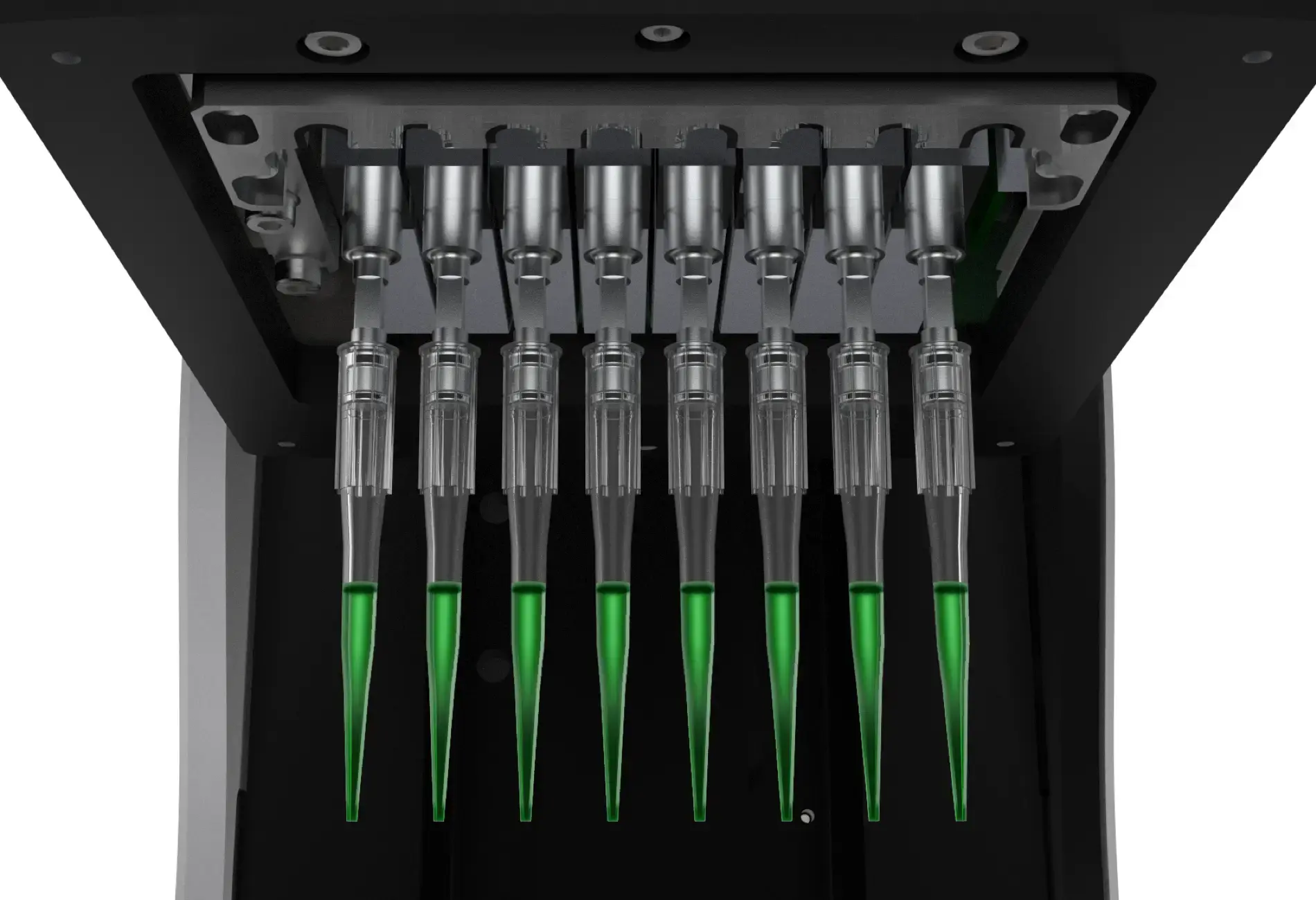
Introduction
Liquid handling systems are fundamental to modern laboratories, enabling precise and efficient manipulation of liquids. Here, we touch on the advanced technologies, diverse applications, and the significant benefits and challenges of these systems, highlighting their crucial role in scientific research and industrial applications.
Technologies in Liquid Handling
Liquid handling technologies have advanced significantly, integrating automation and sophisticated software to enhance precision, efficiency, and reliability in liquid transfer tasks.
Manual vs. Automated Systems
Manual liquid handling systems rely on human operation for tasks such as pipetting and dispensing. Though reliable, manual methods are subject to human error and variability. In contrast, automated systems utilize robotics and software to perform these tasks with a high level of precision and consistency, significantly reducing the risk of error and increasing throughput.
High Throughput Liquid Handling
High throughput systems are essential for large-scale sample processing, particularly in fields such as drug discovery, genomics, and clinical diagnostics. These systems can handle thousands of samples simultaneously, expediting research and testing processes and allowing for rapid data generation and analysis.
Key Features of Modern Liquid Handling Systems
- Automated Pipetting: Enhances precision and consistency in liquid transfer tasks, critical for reproducibility in experiments.
- Integrated Data Analysis: Provides real-time monitoring and adjustment capabilities, ensuring optimal performance of liquid handling tasks.
- Enhanced Safety Features: Minimizes the risk of contamination and exposure to hazardous substances, improving laboratory safety.
Applications of Liquid Handling Systems
Liquid handling systems are utilized across various industries, each requiring specific configurations and technologies to meet their unique needs.
Drug Development
In drug development, automated liquid handling systems facilitate high throughput screening and combinatorial chemistry, enabling rapid testing and analysis of numerous compounds. This accelerates the drug discovery process and enhances the efficiency of identifying potential drug candidates.
Genomics
Genomic research relies heavily on precise liquid handling for techniques such as PCR and sequencing. Automated systems ensure consistent sample preparation and processing, which is vital for the accuracy and reliability of genomic experiments.
Clinical Diagnostics
Clinical laboratories utilize liquid handling systems for a range of diagnostic tests, including ELISAs and PCR. These systems enhance the accuracy, speed, and reproducibility of diagnostic procedures, leading to improved patient outcomes and streamlined laboratory workflows.
Food and Beverage Analysis
In the food and beverage industry, liquid handling systems are used to detect contaminants and ensure quality control. Automation reduces the risk of human error and increases the reliability and consistency of analytical results.
Benefits of Liquid Handling Systems
The integration of advanced liquid handling systems offers numerous benefits, enhancing laboratory efficiency, data integrity, and overall research quality.
Improving Laboratory Efficiency
Automating repetitive liquid handling tasks frees up scientists to focus on more critical aspects of their research, improving overall laboratory productivity. Automation also allows for faster processing of samples, leading to quicker experimental results.
Ensuring Data Integrity
Accurate liquid handling is crucial for maintaining the integrity of experimental data. Automated systems provide precise measurement and transfer of liquids, ensuring that experimental results are consistent and reproducible.
Reducing Contamination
Automated liquid handling systems minimize the risk of cross-contamination between samples, which is essential in sensitive applications such as clinical diagnostics and genomic research. Proper liquid handling techniques ensure that samples remain uncontaminated and that results are reliable.
Enhancing Safety
Liquid handling systems improve laboratory safety by reducing manual handling of hazardous substances. Automation minimizes the exposure of laboratory personnel to dangerous chemicals and reduces the risk of accidents.
Challenges of Liquid Handling Systems
Despite their advantages, liquid handling systems present challenges that laboratories must consider to fully optimize their use.
Investment
The initial investment and maintenance costs of advanced liquid handling systems can be challenging, particularly for smaller laboratories.
Complexity and Training
Automated systems require specialized training for proper operation and maintenance, adding to the operational costs. Laboratory personnel must be proficient in using the software and hardware components to maximize the benefits of these systems.
Potential for Technical Issues
As with any complex technology, liquid handling systems can experience technical issues that may disrupt laboratory workflows. Regular maintenance and troubleshooting are necessary to ensure consistent performance and minimize downtime.
Future Trends in Liquid Handling
The liquid handling field is constantly evolving, with new technologies and innovations enhancing these systems' capabilities and applications.
Integration with Artificial Intelligence (AI)
AI and machine learning are increasingly being integrated into liquid handling systems to optimize workflows and improve accuracy. AI algorithms can analyze data in real-time, adjusting liquid handling processes for optimal performance.
Miniaturization and Microfluidics
Advances in microfluidics are enabling the development of smaller, more efficient liquid handling systems. These systems can handle very small volumes of liquids, making them ideal for applications in drug discovery and diagnostics where sample quantities are limited.
Remote Monitoring and Control
Remote monitoring and control capabilities are becoming more prevalent, allowing researchers to oversee and adjust liquid handling processes from anywhere. This flexibility enhances productivity and allows for quicker responses to any issues that arise.
Environmental Sustainability
There is a growing focus on developing liquid handling systems that are environmentally sustainable. This includes using materials that are recyclable and reducing the energy consumption of these systems to minimize their environmental impact.
Conclusion
Liquid handling systems are indispensable tools in modern laboratories, enhancing accuracy, efficiency, and safety across various applications. The benefits they provide justify the investment in many laboratories. As technology advances, liquid handling systems will continue to evolve, offering even greater capabilities and applications in scientific research and industry.
Revision: BL-DIG-240531-01 RevB - Liquid Handling Guide
